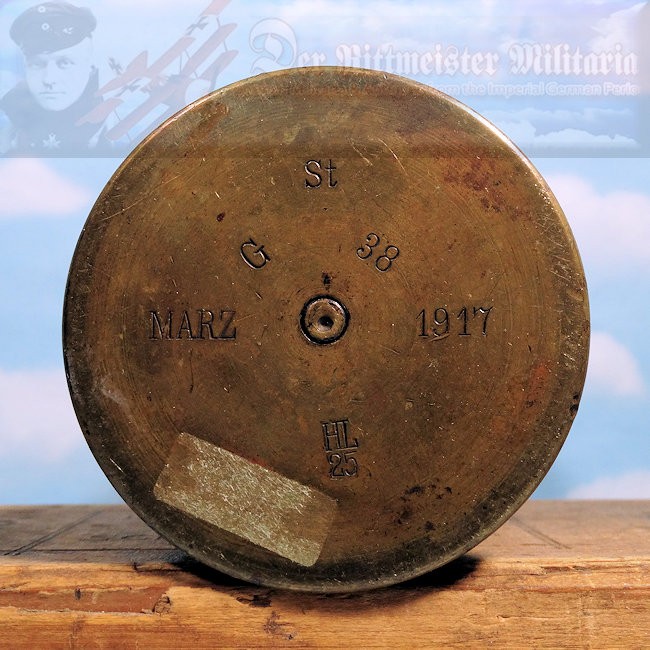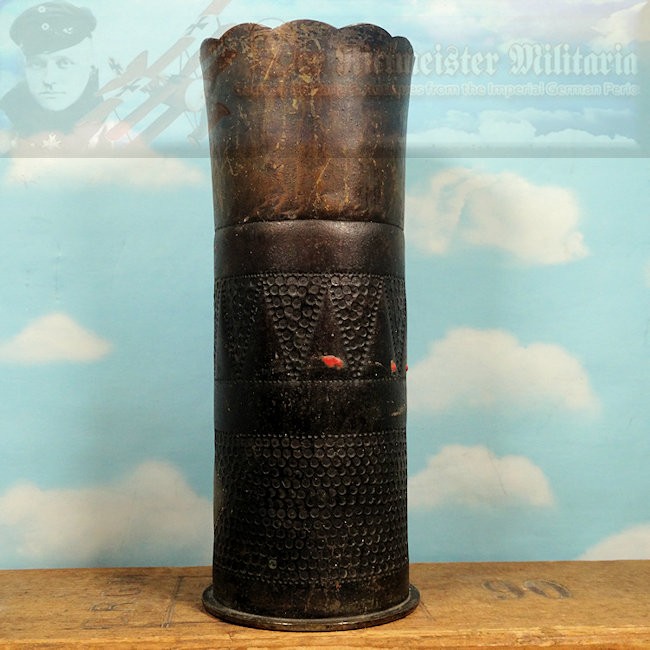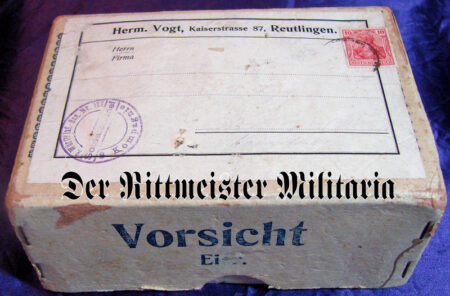Description
TRENCH ART – ARTILLERY SHELL VASE.
Trench art was a unique art form that emerged during WW I. While it is true that some examples of trench art were produced during the Napoleonic Wars on a very limited basis, but they hardly approached the scale of trench art pieces produced during the Great War.
WW I trench art was produced by three basic groups: soldiers, sailors, and home front organizations. The first group was the soldiers at the front who gathered castoff military items that they refashioned into various artifacts. The second was wounded soldiers and sailors who also re purposed military castoffs as part of their recovery rehabilitation. The third group was POW’s who whiled away their hours in their prison camps. [A fourth category included Imperial German companies that fashioned bits and pieces of front line castoffs into patriotic jewelry such as pins and rings]. The shared theme among the first three groups was that its members all had time on their hands. Producing trench art was a means to keep busy, show their creativity, and turn discarded waste into beautiful objects de art that were sought-after back home. I find the endless creativity that was displayed fascinating.
Today we are offering an artillery shell casing that has been converted into a useful vase. While I have offered some very elaborate examples of trench art shell casings in the past, this is a far more simple example. The shell/vase stands 9” tall. Its diameter at the lip is 4,” while the diameter at the base is 3 ½.” The shell came from a 77mm (7.7cm) German Field Cannon, the most commonly-used of its type during WW I. The example was fabricated in March 1917 and displays numerous hallmarks on its base.
The designs on the shell casing’s side were applied with a small hammer. The vase’s upper band features approximately ten inverted triangles circling its circumference. Below this band is an oval area that measures 3” x 11 ½.” Again, a hammered, dimpled design encircles the vase. The shell casing’s top features scalloping around the entire rim.
This reasonably-priced vase would look lovely displaying an arrangement of flowers anywhere in your home.







